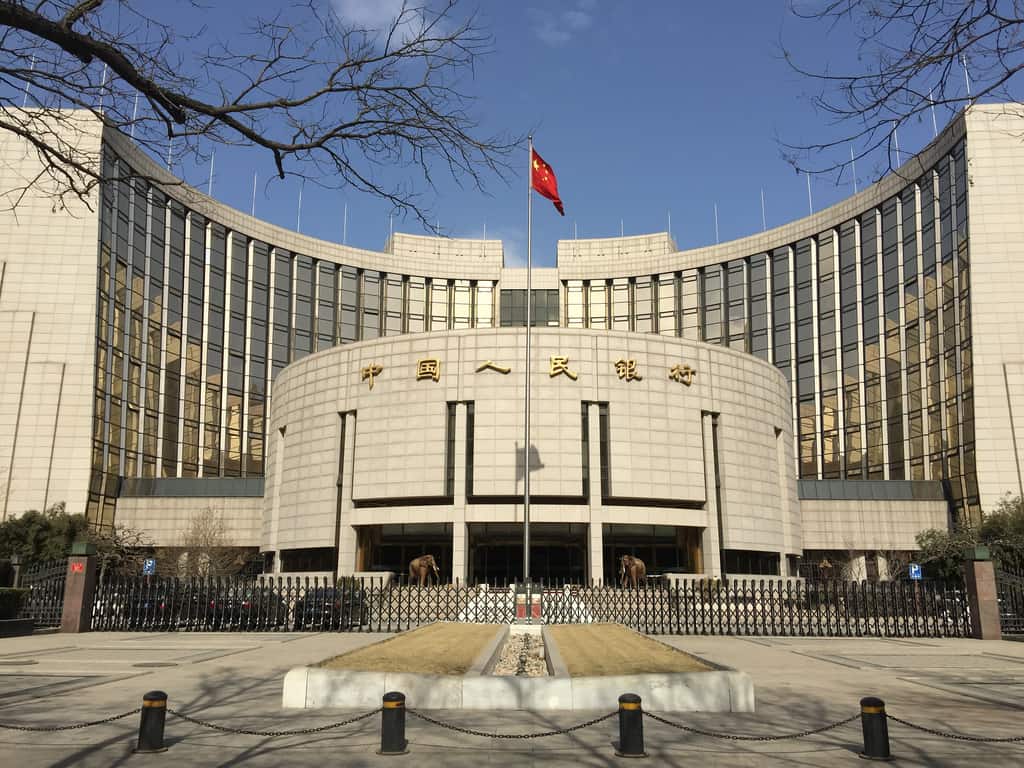Observers say the likelihood of cuts to the reserve requirement ratio (RRR) before the end of the year has fallen after the People’s Bank of China (PBOC) reduced the volume of outstanding medium-term lending facilities (MLFs) in its latest round of open market operations.
On 15 November, PBOC undertook 850 billion yuan of MLF operations and 172 billion yuan in 7-day reverse repo operations, for the purpose of “maintaining rationally ample liquidity in the banking system and offsetting the impact of factors such as the peak tax period.”
The rates for the MLF and 7-day reverse repo were unchanged compared to the last round of operations, at 2.75% and 2% respectively.
On the same date, 1 trillion yuan in MLF and 2 billion in reverse repos matured, for a net contraction of 150 billion yuan in the longer-dated instrument.
PBOC said that since the start of November it had already injected 320 billion yuan in medium and long-term liquidity using other instruments, including pledged supplementary loans (PSL) and tech innovation re-loans, with this volume exceeding the volume of maturing MLFs.
As of 14 November, the DR007 China interbank bond collateral repo rate – considered a key measure of interbank liquidity, stood at 1.76%, for rise compared to the October average of 1.65%. The 1-year commercial bank (AAA grade) interbank certificate of deposit yield-to-maturity was 2.14%, for a rise of 13 basis points compared to 2.01% in October.
State-owned media said that the latest round of open market operations saw an appropriate injection of short-term liquidity to satisfy demand from financial institutions and flatten out short-term funds volatility. At the same time, large-scale volume of medium and long-term liquidity injections will help to maintain ample liquidity and strengthen the ability of banks to lend.
The rates for both MLF and reverse repos staying unchanged was in line with consensus expectations, and makes a shift in the benchmark loan prime rate (LPR) less likely. Mao Zhouhua (周茂华), macro-researcher with China Everbright Bank, said the latest round of open market operations has increased the likelihood that the LPR will hold steady this month.
Wen Bin (温彬), chief economist with China Minsheng Bank, said to Securities Daily that the latest round of open market operations focused on balancing out the supply of medium and long-term liquidity and strengthening targeted and structural support.
“This demonstrates that the level of refinement of open market operations has further increased, achieving maintenance of rationally ample liquidity, preventing funds from continuing to accumulate in empty circulation and arbitrage, using exertion in structural areas to drive economic stabilisation and recovery, and addressing the multiple key targets of internal and external balance.”
Wen sees little likelihood of cuts to the RRR before the end of the year, given that interest rates are still beneath policy rates despite their recent gains.
He further points out that demand for finance from the real economy remains strong, so that any cuts to the RRR would likely “lead to an ongoing accumulation of funds, making it easy to trigger empty circulation of funds and arbitrage, and reducing the efficiency of fund usage.”
“Additionally, at present there is a marginal convergence of funds and leverage rates are falling. If the RRR declines, this will send the market a signal of continued loosening, or could trigger a rise in leverage.
“Looking at historical experience and actual circumstances, at the start of next year the necessity and likelihood of further RRR cuts is higher. At the start of next year liquidity will further contract, with local governments issuing special bonds in advance and the pace of lending increasing. This will necessitate a cut to the RRR when appropriate.”
Mao Zhouhua also believes that the likelihood of a cut to the RRR before the end of the year has fallen.
“On the one hand, YoY M2 growth was high in October, reflecting moderate growth in overall monetary and lending volumes at present,” he said. “On the other hand, what’s critical right now is guiding financial institutions to reduce financing costs for the real economy.”


